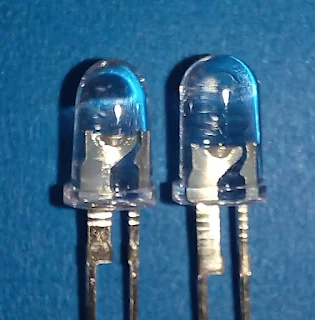I used the Hameg HM203-6 scope to test the Tennis-for-Two emulator I quickly built in November 2023. I also carried it to the exhibition venue as a backup. When it returned home I felt the urge to play with this analog oscilloscope that was lucky enough to be extracted from my pile of "probably to-be-fixed stuff".
So, what was wrong with it?
- compressed traces, about 0.7x shorter on both axes, and too bright;
- unblanking not working properly (it's the circuit that blanks the CRT electron beam when it returns to the left);
- rusty contacts.
 |
| Too high HV symptoms on a Hameg HM203-6 oscilloscope. |
Hameg's were built when SMD was not a thing yet (mine is from 1988) and they use common (...back then...) parts. Therefore tracing the fault doesn't require a microscope and a replacement component can be found.
For the compressed bright traces I posted a request on eevblog and few fellas responded with very useful tips. Actually they noticed the problem with unblanking! The verdict is: High-Voltage is too high. It makes sense: higher voltage means faster electron beam that both gets less time for full deflection and hits harder the phosphor. I had checked the 150V line for deflection circuitry, which was fine. Sure enough the -1900V was at -2550V.
[Measuring kiloVolts is an interesting journey in itself and there will be a dedicated post.]
On eevblog was suggested that IC502, a 741 op-amp, might be faulty: "check that the voltage between inputs is few milliVolts max." I measured 455 mV, replaced the IC, -1900V was restored and traces "uncompressed". Considering the cost of a 741 I will not look any further for faults in the HV regulator, leaving a deeper inspection in case the problem arises again.
There is still the issue with unblanking. Something might have been damaged running at -2500V. There are three suspects: 68pF 2kV capacitors, the optocoupler, a couple of transistors. The latter two components are socket, most likely because they were prone to failure.
As for rusty contacts, they probably need some exercise, the most annoying being the "INV" button on both channels.





